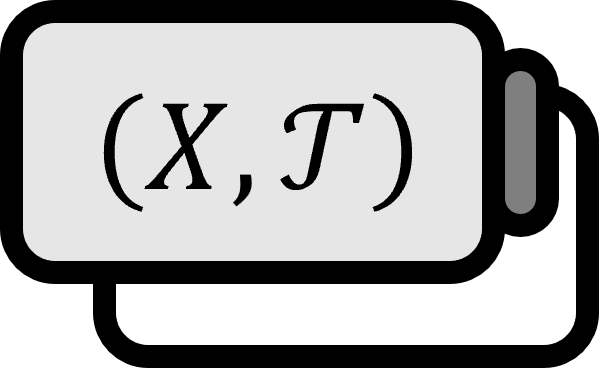Self-Evident Topology and Discrete Topology
Definition 1
Given a set $X$, providing it with the trivial topology $\left\{ \emptyset , X \right\}$ makes it the smallest space, called the trivial space. Conversely, endowing it with the discrete topology $\mathscr{P}(X)$ makes it the largest space, known as the discrete space.
Sierpinski Space
If the topology of $S : = \left\{ 0, 1 \right\}$ is $\mathscr{T} : = \left\{ \emptyset , \left\{ 1 \right\} , \left\{ 0, 1 \right\} \right\}$, then $S$ is called the Sierpinski Space.
The Sierpinski space refers to a space for a set with only two elements, where the topology is neither trivial nor discrete. The choice of whether the element is $0$ or $1$ does not change the essence, so it’s meaningless to distinguish them. In this topology, $\left\{ 1 \right\}$ is open, and $\left\{ 0 \right\}$ is closed.
The codomain of the Sierpinski Space
$$ \emptyset ' = \emptyset \\ \left\{ 1 \right\} ' = \left\{ 0 \right\} \\ \left\{ 0 \right\} ' = \emptyset \\ \left\{ 1,0 \right\} ' = \left\{ 0 \right\} $$
The appearance of $\emptyset$, which seems like a combination of $0$ and $1$, is an example where mathematical beauty is maximized. If you’re new to topology, it’s recommended to try proving the above result for practice. It can be easily verified by simply calculating and listing the definitions without any special techniques.
Munkres. (2000). Topology(2nd Edition): p77. ↩︎
